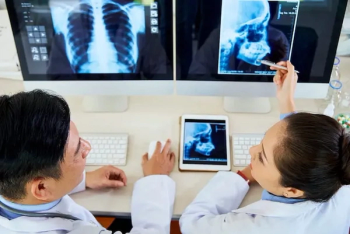
Keep an Eye Out for Magnetic Eyelashes
Radiologists warn this magnetic cosmetic attachment could pose a risk for patients or compromise image quality.
Keep an eye open for magnetic false eyelashes – particularly if you’re sending a patient for an MRI.
These cosmetic attachments are popular, but they frequently go overlooked, according to a recent letter to the editor in the
And, that can cause problems, researchers said, potentially putting patients at risk.
“Near the MRI scanner, the eyelashes can rapidly become a moving projectile as close as millimeters from the orbit of the eye and hence become a safety concern,” said a team led by Cihat Eldeniz, Ph.D. an MR physicist with the Mallinckrodt Institute of Radiology in St. Louis. “In addition, even if they do not become a direct hazard to the patient, small ferromagnetic objects that get pulled into the MR system can remain there, or lodge within a receiving coil or accessory, potentially resulting in artifacts that may masquerade as pathology.”
Related Content:
Eldeniz’s team reached this determination after conducting deflection tests with six different eyelash brands with a 3T MR scanner. They did not conduct heating and torque testing as doing so would likely have meant the eyelashes would not have stayed attached to the patient.
According to the study’s results, the team identified deflection angles that measured more than 45 degrees, with heavier lashes exhibiting a more projectile effect. These outcomes confirm that magnetic eyelashes are not safe to wear in the MRI scanner. Specifically, they said, patients should take them off before entering Zone 3, the area before he or she would enter the MRI scanner room.
The team also noted that, even though the study was conducted with a 3T scanner, their results indicated the projectile effect could be significant even at 1.5T. In addition, they advised, any magnetic eyeliner should also be removed prior to entering the MRI scanner room to avoid any potential problems or risks.
Newsletter
Stay at the forefront of radiology with the Diagnostic Imaging newsletter, delivering the latest news, clinical insights, and imaging advancements for today’s radiologists.




